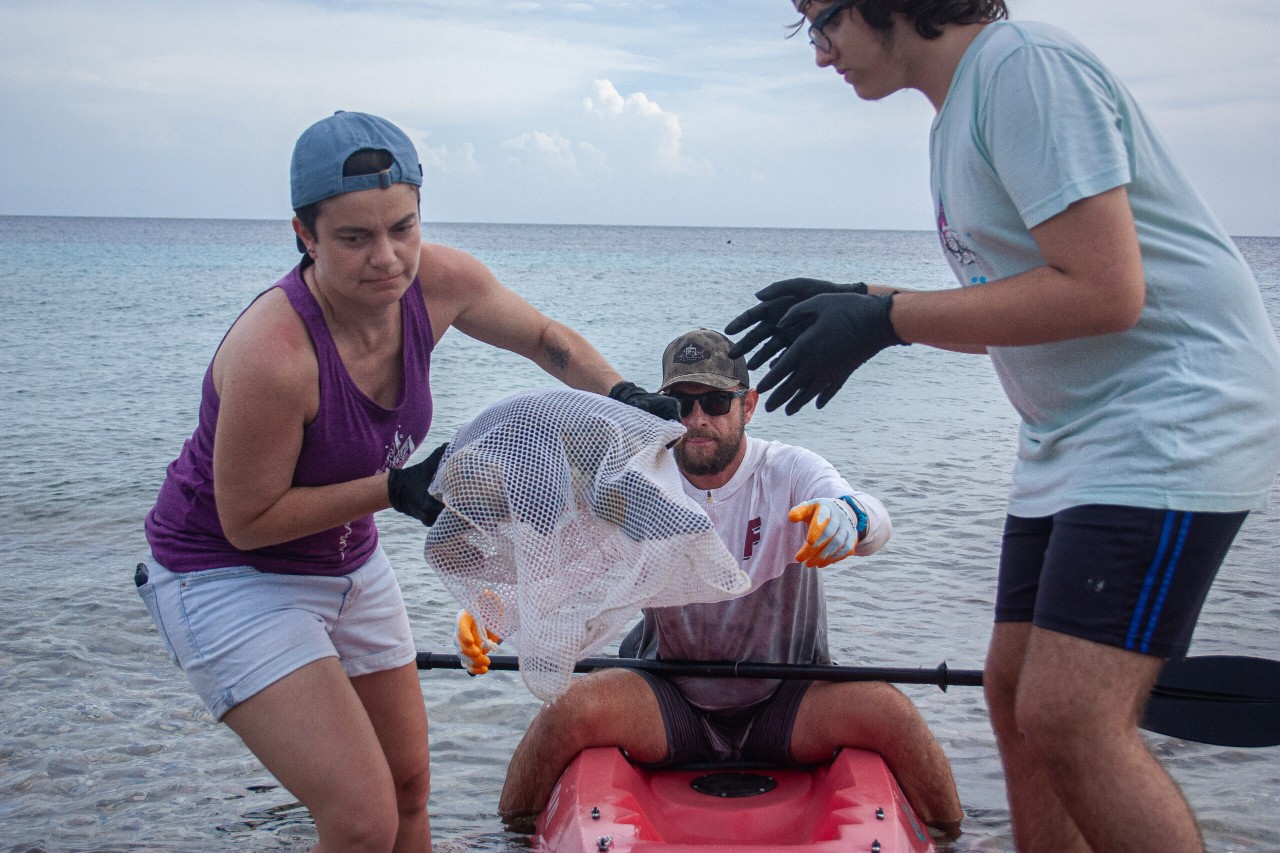On a cold day in February, chemistry professor Jeffrey Ashley, PhD, and the students in his lab headed to the Delaware Inland Bays, a series of inlets spanning the coast of southern Delaware. There, they trekked through 12 different salt marsh habitats and searched for Atlantic ribbed mussels, scraping them off the tidal shorelines and bringing them back to Dr. Ashley’s lab on Jefferson’s East Falls campus.
After processing the tissue within those mussels, Connor Ogden, a former undergraduate in Ashley’s lab and now a student at Sidney Kimmel Medical College, examined the remains of the animals. As he looked into the microscope, he saw the same thing, again and again: rainbow-colored tangles of plastic fibers.
Their study found microplastics — tiny fragments of plastic smaller than 5 millimeters — in every sample of mussels they analyzed, no matter how urban or rural the site that the mussels came from. Amidst a growing body of research that finds microplastics all around us, their results weren’t necessarily a surprise — but they do shed more light on the type of microplastics plaguing aquatic ecosystems on the east coast, and they may begin to provide some direction on what to do about it.
In recent years, a battery of studies has confirmed that microplastics are in our soil, our oceans, our tap water, and even in the snow of Antarctica. While it was clear that microplastics are already abundant in the environment, Dr. Ashley wanted to investigate the extent to which microplastics had infiltrated filter-feeder organisms like mussels. These animals process gallons of water through their bodies every day, so he believed they were likely taking in microplastics as well.
“These microplastics are suspended in the water column, so the mussels are both getting exposed to them and accumulating them in their bodies,” explains Dr. Ashley.
Ogden, and other undergraduate students within Ashley’s research group, laboriously prepared and analyzed mussels over months. Their analysis confirmed another trend in microplastic research: most of the fibers they identified had come from synthetic fabrics such as polyester and nylon.



